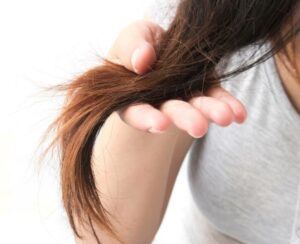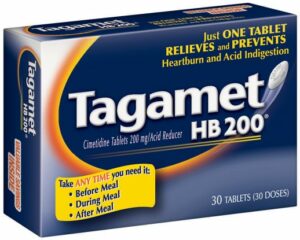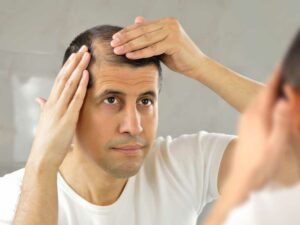I’m the fellow who posted a brief anonymous note to the effect that I had seen some positive effects from the use of Iamin. There were questions about what, how much, etcetera, and so I wanted to provide a fairly detailed record.
Presenting symptoms: 30-year old Caucasian male, fit and healthy, classic androgen-induced male pattern baldness. “Horseshoe” rescission at temples to a noticeable degree, and a large sparse patch at the crown before treatment began. The balding progression began in my early twenties, the same time as it had for my older male relatives, and ran slowly but very steadily until interrupted by treatment.
Initial treatment consisted of topical 2% minoxidil, initially the gruesomely and greedily overpriced Rogaine from Upjohn, and nowadays the cheaper identical generics made by Lemmon et al. (Don’t do business with Upjohn; price gouging is _not_ to be encouraged.)
I obtained some 0.05% retinoic acid cream (Cilag’s generic for Retin-A) in Mexico and added it to the minoxidil within about two weeks of initial treatment. I have continued use of this combination since.
I began the minoxidil+retinoic acid combination therapy about twenty months ago. It produced the common and alarming initial wave of increased shedding. If it had not been for the warnings by Peter Proctor and others on the alt.baldspot group, I would probably have panicked and quit the treatment — testimony to the value of the information to be had here! (Thanks, guys.)
After about two weeks, the phase-shift shedding stopped. Loss rate, measured by both visual inspection of the key MPB areas and by the volume of hair left in the drain screen after showering, went down by 75%.
At the four-month mark, I realized that the slow and awful tide of balding progression had halted. Man, I cannot tell you how good that felt. Being in the grip of a physiological process that you can’t for the life of you control is a pretty unpleasant feeling. Minoxidil and retinoic acid gave me back some control. For once, I felt I had a shot at beating MPB.
Unfortunately, I was regrowing precisely nothing on minoxidil and Retin-A. Not to be sneezed at. Simply being able to stop the underlying secular trend toward shedding is hard enough. But I still had a large pale patch of scalp visible through my hair from behind.
Justifiably self-conscious about that, I checked in with a local transplant surgeon. He graciously offered to put it right for a mere $6500, no guarantees. I passed on that and began to explore additional measures.
About five months back, I added Iamin to the base therapy of minoxidil and Retin-A.
Let me describe the stuff for those not familiar with it. It comes in a simple squeeze tube, not unlike the ones from which sunscreens are dispensed. The product comes out as a pale blue gel, easily spread to a thin layer. The blue is, I am told on the group, the prezatide copper peptide that produces the wound healing and cellular growth stimulation effect that Procyte researched and originated.
It goes on easily and feels like the old Dep styling gel to the touch. It dries to a heavy whitish crust that will stiffen and clump hair. You would not want to apply Iamin at any point before going out in public, which limits its utility to some degree.
The crust is easily water-soluble. My normal morning shower removes all residues and traces of the Iamin from the previous night. No special measures required. Some people who have used the similar Folligen product have complained of a greenish discoloration affecting their hair. I have no usage experience with Folligen, but I have not noticed any problem with color due to Iamin.
Given that, here’s the regiment I now use. I’ve marked with a * the items that carry over unchanged from the baseline therapy.
Morning:
· Shower, wash hair with ordinary shampoo
· Apply retinoic acid cream to temple MPB areas.
· Apply approx .1 ml minoxidil liquid to each temple.
· Apply 1 ml minoxidil liquid to crown MPB area
Evening:
· Wash temples carefully with mild soap, warm water.
· Apply retinoic acid cream to temple MPB areas.
· Apply approx .1 ml minoxidil liquid to each temple.
· Apply 1 ml minoxidil liquid to crown MPB area.
· Apply about 1 cc of Iamin gel to temple MPB areas over minoxidil.
· Apply about 3-4 cc of Iamin gel to crown MPB areas over minoxidil.
I’ve stuck to this unaltered, with only the occasional one-day lapse for logistical reasons, for five months. Here’s the outcome of that:
For the first two months of Iamin use, I noticed precisely nothing. There was no wave of increased shedding, as often accompanies the start of new loss prevention agents. I do not know whether or not to attribute this to the use of the baseline treatment of minox+retinoic.
After about two months, I began to notice new growth. I have the same three areas that most men have around MPB zones: shiny, definitely bald ones; fully thatched ones that have not yet been attacked by the balding progression; and, importantly, transition zones in between, where thinning is evident but where there is still a reasonable density of hair.
It was a fairly astonishing thing. I have a set routine of examination, where I check certain rigorously defined areas. Suddenly, almost overnight at the two-month mark, I noticed that there were several dozen new hairs visible in the transition areas on each temple.
Let me provide a guideline for that. The size and type of hair varies with the balding area. Typically, the really bald, isn’t-coming-back-at-all areas have no hair at all. The transition zones start with vellous hairs (the small, thin, unpigmented ones) and go all the way up to fat normal fully pigmented hairs. The zones not yet attacked by MPB are just about all normal hair.
What Iamin use appeared to have done was to have restarted some medium-size hair shafts. These grew to moderate length — less than that of a regular hair — over the next few weeks. I was able to actually see the shafts thickening and increasing in pigmentation as they grew.
I still have all of those new hairs. They are good enough to qualify as a definite, visible-at-a-distance frontal balding reduction. You could say, accurately, that I am delighted.
The next thing I noticed was the vellous hairs that line the transition areas beginning to respond. This is the most interesting thing, because whereas the first responders had pretty obviously been recently inactivated follicles waking up after a short sleep, the vellous hairs had been quiescent for a long time.
They have not responded as suddenly or as radically as the first wave of transition zone hairs. However, over the three months since I began to notice activity, large numbers of the vellous hairs have grown in length, grown in diameter, and repigmented to be much darker and more visible.
This is not yet what I would classify as reduction in baldness. The lengths I’m talking about here are a millimeter or two. But it’s like the dancing bear at the circus: it may dance badly, but the impressive thing is that it dances at all. Nothing previous had led me to believe that there was any chance at all of saving vellous hairs.
Now, after Iamin use, I believe that newer and better agents could potentially grow back almost all the vellous hair. The region of darkened and thickened vellous hair traces out a “ghost hairline” in the mirror. It’s the hairline I had at 20. _That_ is impressive to behold. Now the goal is to solidify the ghost over time.
That will probably be tough. My understanding is that the vellous hairs have lost their vascularization; the support blood vessels that feed a follicle atrophy when the follicle goes into the quiescent phases of MPB. It is probably going to take a lot of work and time to get around that.
That’s what I have by way of visible reduction at the temples. The temples are traditionally tougher than the crown to grow new hair on. Minoxidil, I believe, has been asserted only to be clinically effective in regrowth on the crown. Regrowth at the temples is typically much more sparse. So how’s my crown?
Pretty impressive. The big visible scalp patch is no longer big and visible. I haven’t changed the length of the cut or the way that I brush and comb it, but I was trying on jackets at a store last week, standing between a pair of opposed three-panel mirrors.
What I was looking at was the drape of the jacket from behind, but I couldn’t help noticing that I now have no balding progression at the crown that is visible at the sort of distances that people would be at when walking in public.
Up very close, at conversational distances, and under bright light, it is still possible to tell that I have some thinning at the crown. But it is greatly reduced. I no longer am self-conscious about it. It’s gone from being obvious and ugly to being essentially unobtrusive. I haven’t had anyone comment about it recently. Whew!
To sum up all of the foregoing: I have found Iamin to be a moderately effective regrowth agent, at least when used in conjunction with the rest of my regimen.
Could Iamin be improved upon? Absolutely. Let me note the areas where changes suggest themselves.
I believe that, based on comments here in the group, Iamin was approved as a medical device, not as a true drug. That apparently limits the amount of copper prezatide in the product. Extrapolating from the amount of blue in the light blue gel, Procyte watered down the PCA percentage heavily. Put more PCA in and I’d expect better, faster results.
The vehicle in which the PCA rides is not presently a penetrating one. The product is supposed to form a barrier over wounds to allow them to retain moisture and heal quickly. That thick white crust it forms after application is due to its being designed for this use.
I believe the component in the vehicle that does this is hydroxypropyl methylcellulose. Get that out and use some alcohol and propylene glycol, as is done with minoxidil, and more PCA would get to follicles faster. (There may be a link between my success and the fact that I have been applying Iamin and minoxidil in quick succession. The penetrants in the minoxidil product may well be aiding PCA absorption through the skin.)
PCA in a penetrating vehicle that was unobtrusive would also allow morning use before going out in public. The current Iamin product is not well suited to that.
Procyte is apparently doing both of these things in their Trichomin product, which is explicitly intended to aid balding, and which is (just now?) closing Phase II clinical trials. I’ll be fascinated to see what the results of that are.
My dream regimen at this point is to step up to 5% minoxidil, continue retinoic acid at this level, though possibly in a liquid, and add oral finasteride at a low dose.
On top of that new baseline therapy, I’ll absolutely continue to use Iamin daily until Trichomin is approved and ships (assuming that it’s clear sailing from here on out).
Full disclosure section:
Bear in mind that everything above is only anecdotal evidence, which is classically prone to error. I would like to think that I’m much less likely to be prone to reporting and assessment bias than the average consumer. I have an academic and professional background that has trained me carefully in factual lab work. _I_ am convinced, and I don’t convince easily.
But the real proof always comes from double-blind clinical trials with statistically significant numbers of users. We should have data points coming from Procyte soon on their Trichomin trials.
You should also be aware that I have become a Procyte shareholder. As such, it could be interpreted that my comments above could reflect a personal financial bias.
However, this is in keeping with my investment style, which is to buy the products of companies that I know and use. It’s done okay by me in Cisco, Intel and Microsoft; I hope that it also does so in PRCY stock. If Trichomin really does work and receives rapid approval, Procyte could be a ten-bagger in very short order.
I would note that personal experience was not the only barometer on which I relied here. Michael Murphy’s _California Technology Stock Letter_, which is highly regarded by Hulbert and other rating authorities, is bullish on Procyte as a solid low-risk buy. Last Murphy recommendation I saw showed a long- term price target of $15 on PRCY; it’s currently less than $3.
Your mileage may vary, both with the product and with the stock. Don’t believe anyone’s hype, but rather do the math and your own research, and act accordingly.
If anyone has questions, please feel free to post them in the open newsgroup. I’ll pick up and filter them and post a digest-style response in a couple of days.
(Webmaster’s Note: The FDA just approved another ProCyte product on March 14, 1997 that helps prevent newly grafted hairs that have just been transplanted from going into a dormant stage for 6 months, so that they grow immediately after transplantation. The product is called GraftCyte and is being marketed directly to Hair Transplantation specialists.)





